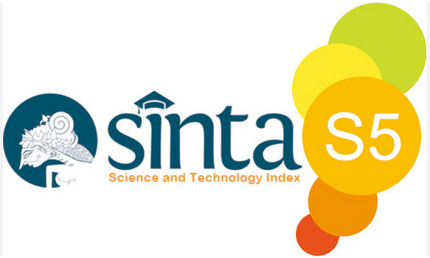Does Content Marketing on TikTok Impacts Female Gen Z’s Engagement?
Abstract
This research examines the interactions between ads and young female TikTok users. Like social media platforms, content marketing has become very popular, encompassing the creation and dissemination of valuable, relevant, and consistent information over time. This revolutionary approach by TikTok to marketing allows marketers to interact with younger audiences via interactive content marketing. Specifically, this study uses a quantitative methodological framework in surveying 256 Generation Z females on TikTok about their content marketing consumption patterns and engagement. The research employs SEM using SmartPLS to explore the relationships between content marketing and customer engagement. The study findings are expected to demonstrate how well-focused content strategies can foster stronger ties leading to higher rates of brand involvement among female Generation Z TikTok users. According to this prediction, TikTok's content marketing significantly positively affects consumer engagement for female Gen Z users.
References
[2] N. Gisha and M. Malinda, “THE ROLE OF CONTENT MARKETING ON TIKTOK IN INCREASING SALES,” 2023.
[3] A. S. Arora and S. A. Sanni, “Ten Years of ‘Social Media Marketing’ Research in the Journal of Promotion Management: Research Synthesis, Emerging Themes, and New Directions,” Journal of Promotion Management, vol. 25, no. 4, pp. 476–499, Jun. 2019, doi: 10.1080/10496491.2018.1448322.
[4] L. De Vries, A. M. Peluso, S. Romani, P. S. H. Leeflang, and A. Marcati, “Explaining consumer brand-related activities on social media: An investigation of the different roles of self-expression and socializing motivations,” Computers in Human Behavior, vol. 75, pp. 272–282, Oct. 2017, doi: 10.1016/j.chb.2017.05.016.
[5] C. Ashley and T. Tuten, “Creative Strategies in Social Media Marketing: An Exploratory Study of Branded Social Content and Consumer Engagement,” Psychology & Marketing, vol. 32, no. 1, pp. 15–27, 2015, doi: 10.1002/mar.20761.
[6] H. A. M. Voorveld, G. Van Noort, D. G. Muntinga, and F. Bronner, “Engagement with Social Media and Social Media Advertising: The Differentiating Role of Platform Type,” Journal of Advertising, vol. 47, no. 1, pp. 38–54, Jan. 2018, doi: 10.1080/00913367.2017.1405754.
[7] R. Dolan, J. Conduit, J. Fahy, and S. Goodman, “Social media engagement behaviour: a uses and gratifications perspective,” Journal of Strategic Marketing, vol. 24, no. 3–4, pp. 261–277, Jun. 2016, doi: 10.1080/0965254X.2015.1095222.
[8] J. Phua, S. Jin, and J. Kim, “Gratifications of Using Facebook, Twitter, Instagram, or Snapchat to Follow Brands: The Moderating Effect of Social Comparison, Trust, Tie Strength, and Network Homophily on Brand Identification, Brand Engagement, Brand Commitment, and Membership Intention,” Telematics and Informatics, vol. 34, Jun. 2016, doi: 10.1016/j.tele.2016.06.004.
[9] J. Chahal and N. Rani, “Exploring the acceptance for e-learning among higher education students in India: combining technology acceptance model with external variables,” Journal of Computing in Higher Education, vol. 34, May 2022, doi: 10.1007/s12528-022-09327-0.
[10] J. W. Creswell and J. D. Creswell, “Research Design: Qualitative, Quantitative, and Mixed Methods Approaches,” 2018.
[11] R. M. Groves, F. J. F. Jr, M. P. Couper, R. Tourangeau, E. Singer, and J. M. Lepkowski, “Survey Methodology, 2nd Edition | Wiley.” Accessed: Jun. 09, 2024. [Online]. Available: https://www.wiley.com/en-br/Survey+Methodology%2C+2nd+Edition-p-9780470465462
[12] R. J. Brodie, A. Ilic, B. Juric, and L. Hollebeek, “Consumer engagement in a virtual brand community: An exploratory analysis,” Journal of Business Research, vol. 66, no. 1, pp. 105–114, Jan. 2013, doi: 10.1016/j.jbusres.2011.07.029.
[13] Karr, “How to Map Your Content to Unpredictable Customer Journeys - Penelusuran Google.” Accessed: Jun. 02, 2024. [Online]. Available: https://www.google.com/search?client=firefox-b-d&q=How+to+Map+Your+Content+to+Unpredictable+Customer+Journeys#vhid=zephyr:0&vssid=atritem-http://learn.meltwater.com/rs/meltwater2/images/Mapping%2520Content%2520Marketing%2520eBook.pdf
[14] J. F. Hair, J. J. Risher, M. Sarstedt, and C. M. Ringle, “When to use and how to report the results of PLS-SEM,” European Business Review, vol. 31, no. 1, pp. 2–24, Jan. 2019, doi: 10.1108/EBR-11-2018-0203.
[15] H.-M. Jeon, F. Ali, and S.-W. Lee, “Determinants of consumers’ intentions to use smartphones apps for flight ticket bookings,” The Service Industries Journal, Apr. 2019, Accessed: May 30, 2024. [Online]. Available: https://www.tandfonline.com/doi/abs/10.1080/02642069.2018.1437908
[16] J. Henseler, C. M. R. Ringle, and M. Sarstedt, “A new criterion for assessing discriminant validity in variance-based structural equation modeling | Journal of the Academy of Marketing Science.” Accessed: Mar. 10, 2024. [Online]. Available: https://link.springer.com/article/10.1007/s11747-014-0403-8
[17] J. Cohen, Statistical power analysis for the behavioral sciences, 2nd ed. Hillsdale, N.J: L. Erlbaum Associates, 1988.
[18] A.-Z. He, Y. Cai, L. Cai, and Y. Zhang, “Conversation, storytelling, or consumer interaction and participation? The impact of brand-owned social media content marketing on consumers’ brand perceptions and attitudes,” JRIM, vol. 15, no. 3, pp. 419–440, Jul. 2021, doi: 10.1108/JRIM-08-2019-0128.
[19] G.-Z. Miliopoulou, “Revisiting product classification to examine content marketing practices,” JRIM, vol. 13, no. 4, pp. 492–508, Nov. 2019, doi: 10.1108/JRIM-07-2018-0084.
[20] R. M. H. Ashari and O. F. Sitorus, “Pengaruh Content Marketing terhadap Customer Engagement Kopi Kenangan,” emt, vol. 7, no. 1, pp. 38–46, Jan. 2023, doi: 10.35870/emt.v7i1.726.
[21] I. Khan, M. Fatma, V. Kumar, and S. Amoroso, “Do experience and engagement matter to millennial consumers?,” Marketing Intelligence & Planning, vol. 39, no. 2, pp. 329–341, Jan. 2020, doi: 10.1108/MIP-01-2020-0033.
[22] C. N. Lontoh, F. A. Suyuthi, and J. N. I. C. Sagala, “Engagement Behavior Generation Z on TikTok Case Study: Cosmetic Brands | Lontoh | Budapest International Research and Critics Institute-Journal (BIRCI-Journal).” Accessed: Jun. 09, 2024. [Online]. Available: https://www.bircu-journal.com/index.php/birci/article/view/4807
[23] J. Fromm, “Marketing to Gen Z: The Rules for Reaching This Vast-and Very Different-Generation of Influencers: Fromm, Jeff, Read, Angie: 9780814439272: Amazon.com: Books.” Accessed: Jun. 09, 2024. [Online]. Available: https://www.amazon.com/Marketing-Gen-Vast-Different-Generation-Influencers/dp/0814439276
[24] Vivaldi, “Marketing Strategies for Gen Z: The Essentials | Vivaldi.” Accessed: Jun. 09, 2024. [Online]. Available: https://vivaldigroup.com/gen-z-marketing-strategies/
[25] A. Bari, W. M. Angguna, A. U. Izzati, and F. Anindea, “Loyalty to influencers and brands: The impact of trust, credibility, and negative publicity,” Journal of Innovation in Business and Economics, 2023, Accessed: Jun. 09, 2024. [Online]. Available: https://ejournal.umm.ac.id/index.php/jibe/article/view/26400













